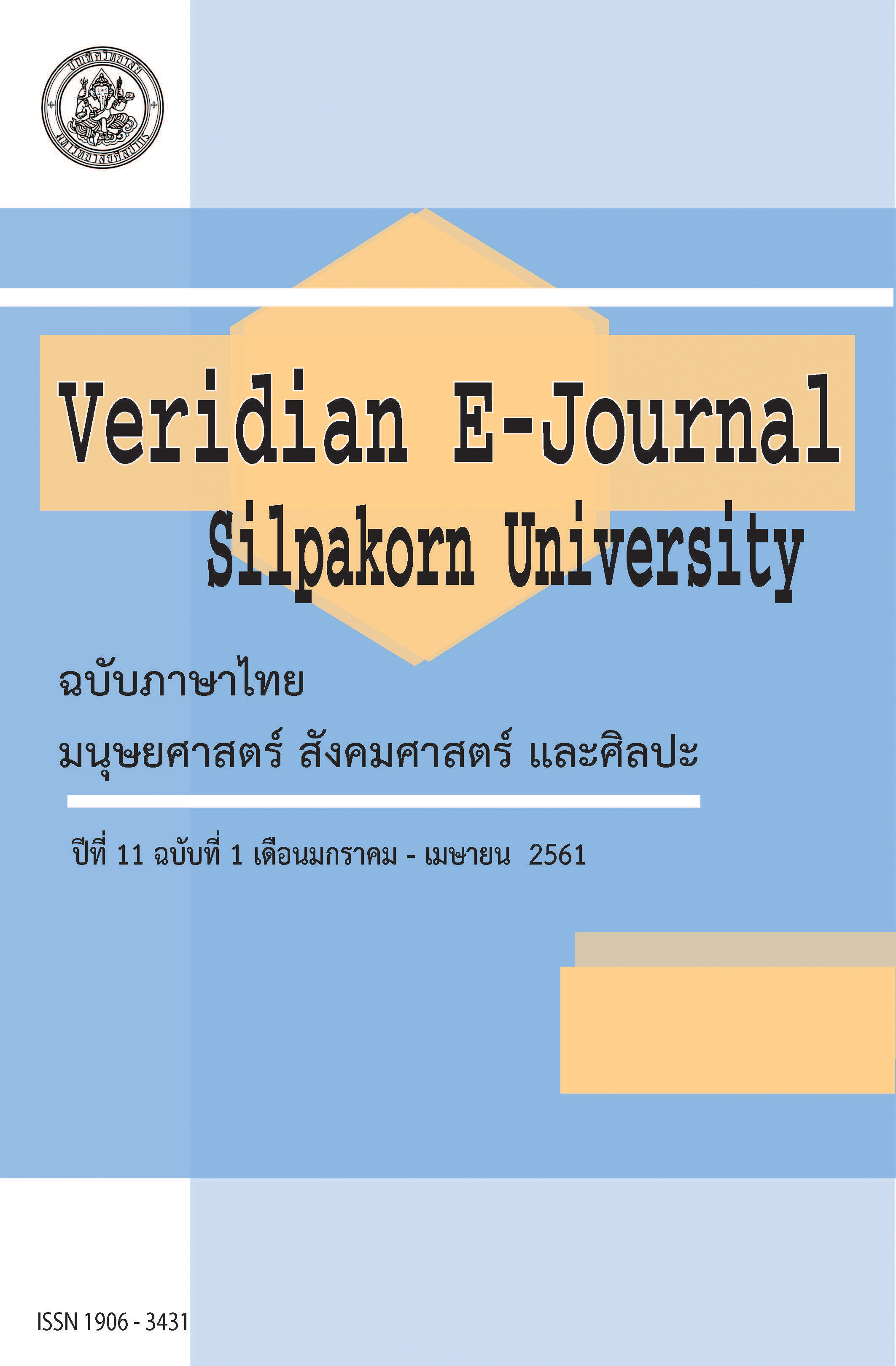การพัฒนารูปแบบองค์การแห่งนวัตกรรมของสถานศึกษาขั้นพื้นฐาน (Development of Innovative Organization Model of Basic Educational Institutions.)
Main Article Content
Abstract
การวิจัยครั้งมีวัตถุประสงค์เพื่อ 1) พัฒนารูปแบบองค์การแห่งนวัตกรรมของสถานศึกษาขั้นพื้นฐาน และ 2) ตรวจสอบรูปแบบองค์การแห่งนวัตกรรมของสถานศึกษาขั้นพื้นฐาน กลุ่มตัวอย่าง คือ สถานศึกษา สังกัดสำนักงานคณะกรรมการการศึกษาขั้นพื้นฐาน จำนวน 397 แห่ง ผู้ให้ข้อมูล ได้แก่ ผู้อำนวยการโรงเรียนรองผู้อำนวยการโรงเรียน และครู จำนวน 1,191 คน ได้มาโดยการเลือกแบบหลายขั้นตอน เครื่องมือที่ใช้ในการวิจัย ได้แก่ แบบสัมภาษณ์ และแบบสอบถามที่สร้างขึ้นโดยผู้วิจัย โดยมีค่าความตรงด้านเนื้อหาระหว่าง 0.80-1.00 มีค่าความเที่ยง เท่ากับ 0.99 สถิติที่ใช้ในการวิเคราะห์ข้อมูล ได้แก่ ร้อยละ ค่าเฉลี่ย ส่วนเบี่ยงเบนมาตรฐาน และการวิเคราะห์เส้นทาง ผลการวิจัยพบว่า
- รูปแบบองค์การแห่งนวัตกรรมของสถานศึกษามี 7 องค์ประกอบ คือ ได้แก่ 1) ภาวะผู้นำ2) โครงสร้างองค์การ 3) การทำงานเป็นทีม 4) การบริหารเชิงกลยุทธ์ 5) การจัดการความรู้ 6) วัฒนธรรมองค์การ และ 7) บรรยากาศองค์การ โดยมีตัวแปรที่มีอิทธิพลทางตรงต่อการเป็นองค์การแห่งนวัตกรรมของสถานศึกษาขั้นพื้นฐาน อย่างมีนัยสำคัญทางสถิติที่ระดับ 0.05 จำนวน 7 ตัวแปร คือ ภาวะผู้นำ โดยมีค่าอิทธิพลเท่ากับ 3.23 บรรยากาศองค์การ โดยมีค่าอิทธิพลเท่ากับ 1.96 การจัดการความรู้ โดยมีค่าอิทธิพลเท่ากับ 0.93 โครงสร้างองค์การ โดยมีค่าอิทธิพลเท่ากับ 0.57 วัฒนธรรมองค์การ โดยมีค่าอิทธิพลเท่ากับ 0.45 การทำงานเป็นทีม โดยมีค่าอิทธิพลเท่ากับ 0.37 และการบริหารเชิงกลยุทธ์ โดยมีค่าอิทธิพลเท่ากับ 0.45 และพบตัวแปรที่มีอิทธิพลทางอ้อมที่ส่งผลต่อการเป็นองค์การแห่งนวัตกรรมของสถานศึกษาอย่างมีนัยสำคัญทางสถิติที่ระดับ 0.05 คือ ภาวะผู้นำ และการทำงานเป็นทีม โดยมีอิทธิพลเท่ากับ -1.89 และ 0.13 ตามลำดับ โดยรูปแบบองค์การแห่งนวัตกรรมของสถานศึกษาขั้นพื้นฐานมีความสอดคล้องกับข้อมูลเชิงประจักษ์
- ผลการตรวจรูปแบบองค์การแห่งนวัตกรรมของสถานศึกษาโดยผู้เชี่ยวชาญ ในด้านความเหมาะสม ด้านความเป็นไปได้ ด้านความถูกต้อง และด้านการใช้ประโยชน์ มีค่าร้อยละ 97.34, 98.22, 98.94 และ 99.06 ตามลำดับ
The aims of this research were to 1) develop an innovative organization model for schools in the basic education; 2) validate the innovative organization model for schools in the basic education. The research samples, derives by proportional multi - stage sampling amounting a total of 397 schools. There were a total of 1,191 school principals and teachers answering the questionnaire. The research instruments consist of interview and questionnaire constructed by the researcher. The questionnaire uses five-point Likert scales with content validity score between 0.08-1.00, and Cronbach, s alpha coefficient score at 0.99. The statistics used for data analysis are percentage, mean, standard deviation and path analysis.
The findings of this research were as follows:
- The innovative organization model of school in the basic education was composed of 7 factors; leadership, organizational structure, teamwork, strategic management, knowledge management, organizational culture and organizational climate. The statistical analysis showed that leadership, organizational climate, knowledge management, organizational structure, organizational culture, teamwork and strategic management had a direct effect on an innovative organization. The direct effect was equal to 3.23, 1.96, 0.93, 0.57, 0.45, 0.37, and 0.45 respectively at the 0.05 level of statistical significance. Additionally, leadership and teamwork had an indirect effect on the innovative organization. The indirect effect was equal to -1.89 and 0.13 respectively at the 0.05 level of statistical significance. The proposed structural equation model of innovative organization fit quite well with the empirical data set
- The evaluation of the innovative organization model in the aspect of suitability, possibility, correctness and usage were 97.34, 98.22, 98.94 and 99.06 percent respectively.
